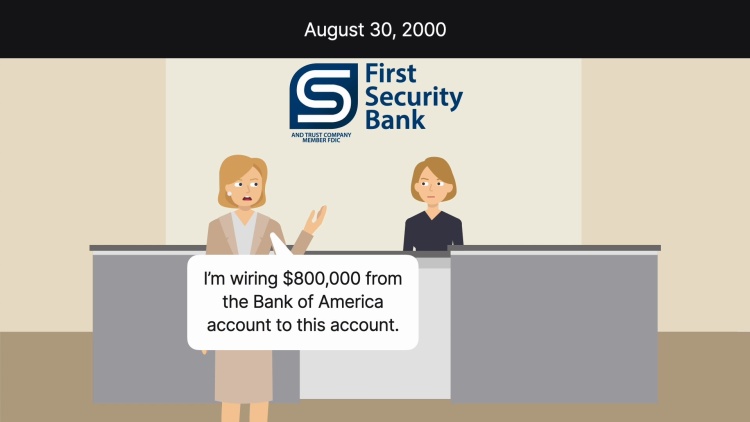In re JD Services, Inc.
United States Bankruptcy Court for the District of Utah
284 B.R. 292 (2002)

- Written by Josh Lee, JD
Facts
JD Services, Inc. (JD) (defendant) was a debtor that had filed for reorganization under the bankruptcy code. JD deposited a check for $7,250.00 into an account at Bank of America (BofA) (plaintiff). The Bank mistakenly credited JD’s account with $725,000 rather than $7,250. On August 30, JD transferred the money over to an account at First Security Bank. BofA notified JD of the error on September 5. On September 13, JD and First Security Bank agreed to place a hold on the funds deposited at First Security Bank in the amount of $717,750, the difference between the amount of the check and the amount mistakenly credited to JD. Between August 30 and September 13, millions of dollars passed through the First Security Bank account as part of JD’s ordinary course of business. The parties stipulated to the account activity of the First Security Bank account. The activity shows two different methods of calculating the lowest intermediate balance between August 30 and September 13. The first approach looks simply at the total funds on deposit and is referred to as Collected Balance. The second approach takes into account holds that were placed on deposits and reflects the amount actually available to withdraw. This approach is referred to as Available Balance. Under the Collected Balance approach, the lowest intermediate balance for the period was $717,750. Under the Available Balance approach, the lowest intermediate balance was $394,460.47. BofA filed an adversary proceeding in the bankruptcy case for the funds mistakenly credited to JD’s account and moved for summary judgment.
Rule of Law
Issue
Holding and Reasoning (Clark, J.)
What to do next…
Here's why 899,000 law students have relied on our case briefs:
- Written by law professors and practitioners, not other law students. 47,000 briefs, keyed to 994 casebooks. Top-notch customer support.
- The right amount of information, includes the facts, issues, rule of law, holding and reasoning, and any concurrences and dissents.
- Access in your classes, works on your mobile and tablet. Massive library of related video lessons and high quality multiple-choice questions.
- Easy to use, uniform format for every case brief. Written in plain English, not in legalese. Our briefs summarize and simplify; they don’t just repeat the court’s language.





